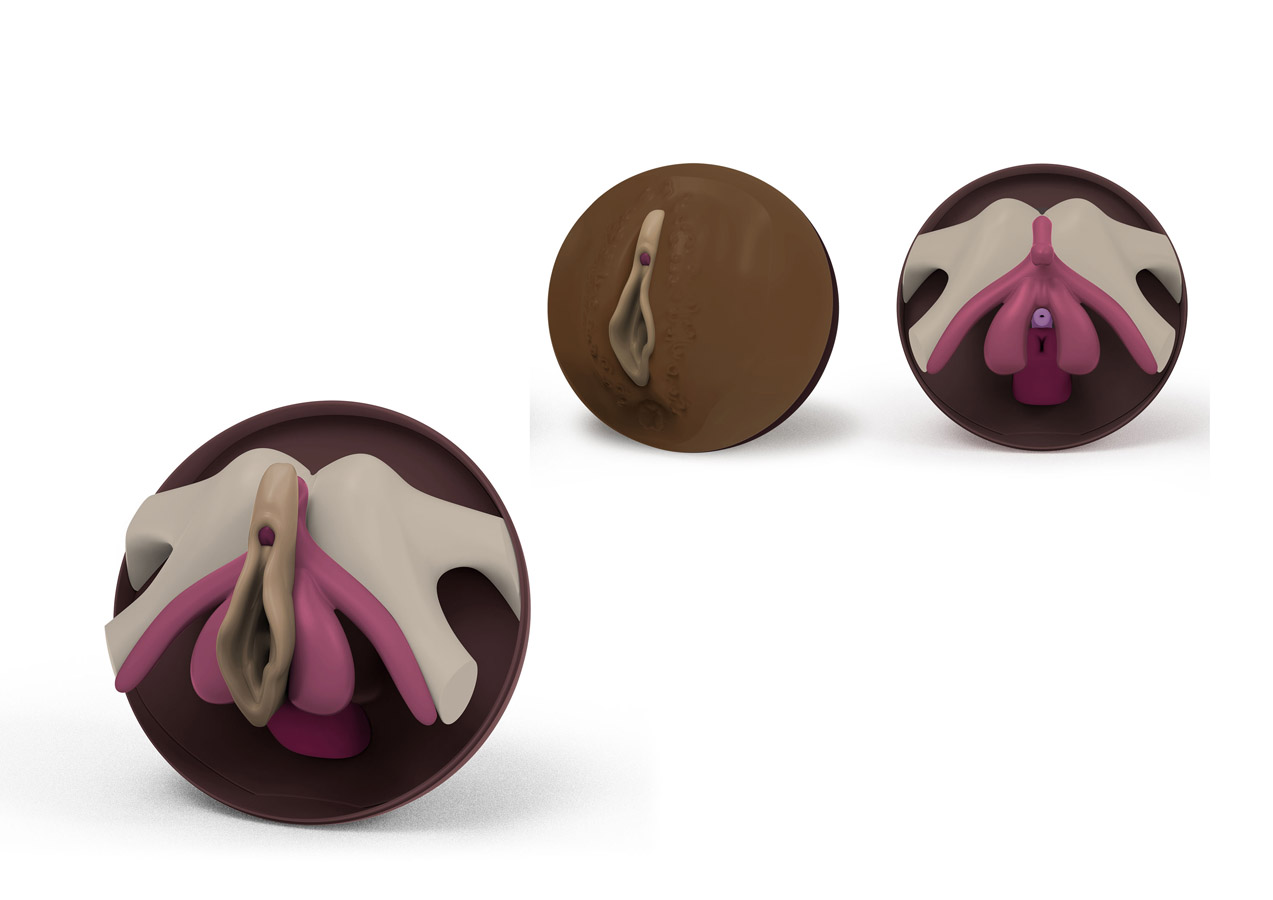The process started with the client and design team looking through the scientific literature to find descriptions, sketches, diagrams and scans to help them start to construction in CAD a 3d model of the vulva, clitoris, vagina, urethra and the pelvic bone they sit on or around.
First stages of the project were about getting the anatomy correct. The client had formed a focus group of international experts in female sexual functioning she called ‘the International Cliterati” that she took iterations of anatomy development to and got feedback.
A break-through came when the concept for a sphere was realised. It sat comfortably in the hand so the other hand was free to demonstrate. There were iterations of development to get the ‘parts’ sitting at the right angle for display or tolerancing. Initially the first iterations were 3d printed. There was at early stages a discussion that the client could potentially batch product models if she didn’t want to commit to the costs associated with developing injection moulded parts. These initial prints became helpful in assessing the model as an intuitive product, with layers that peel away to reveal the underlying biological functions or parts. As the product developed the client took iterations to local sexual health educators to trial these stages and give feedback.
After the client committed to injection moulded manufacture X-Product joined the team and finalised the best ways of clipping or joining layers. The team were able to adjust components, finish and colour as parts came back from early tooling runs. Magnets were trialed and proved to be the easiest way of peeling back layers. The design team were always mindful that the end result was not just a correct anatomical model but an interactive educational tool and ensured the development of a successful exemplar.

